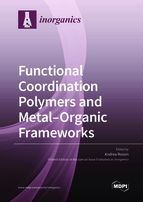An Optimised Compaction Process for Zr-Fumarate (MOF-801)
Round 1
Reviewer 1 Report
The article from Taddei et al. is very interesting and it can be proficiently used to prepare usable materials for industrial application. It is clear, concise, and exhaustive.
A thing that looks strange is the results regarding the sample compressed at the highest pressure (438 MPa). It would be expected to perform better in the drop test (figure 6, orange graph), to have the lowest weight loss (Table 1), and the lower BET data (Figure 9). In practice it should be denser and more resistant than the previous samples. However it seems to not follow the trend. Do you have an idea about its unusual behaviour?
I think the draft is ready for publication just after fixing the few following remarks.
Line 50: have the references 13 and 14 to be placed before the comma? Please check.
Line 120: In Figure 6 can the authors please comment on:
a) why the 5 min compression time performed worst than all those other, in the green graph?
b) if the lowest compression time of 2 minutes performed better than the 15 seconds, why in the orange graph on the right 15 s was chosen instead of 2 minutes?
c) if in the text it is stated that 146 MPa is reasonable value that permits the pellet to not break after 20 or more drops, can the author add a vertical dashed line on the related graphs regarding this threshold?
Line 199: in Figure 2 there is a 2% baseline mass gain that is maintained throughout the cycling. Is it due to CO2 retained in the system, or maybe because the time between each cycle was too short? Can the authors comment on this?
Line 214: this statement is very important and should be supported with some experimental evidences or literature. I think a quick FTIR or a NMR of the dissolved pellet could show the degradation of PVB over compression. Nevertheless, if PVB degrades to become more hydrophilic, it could be that the binder itself can be used in place of MOF-801 (or MOF-801 component can be reduced). Here, a couple of H2O uptake experiments with less binder (2.5%, for example) and more binder (10%, for example) compressed at the same pressure would also explain the hydrolysis hypothesis. The authors shoud perform these experiments to complete the analysis.
Line 226: although the recipe is clear and exhaustive, the style used is quite unusual, and differs from the recipe regarding the pellet preparation. I would please ask the authors if they can rewrite it matching the same style used for the following recipe.
Line 246: please state the RH%.
Line 252: please state the power.
Line 258: were the samples coated with some metal, eg Cr, Ir, Au? Please declare.
Line 264 and 268: the difference between dynamic adsorption and dynamic uptake is not well defined. Please clarify better this part.
Author Response
Response letter attached.
Author Response File: ![]() Author Response.docx
Author Response.docx
Reviewer 2 Report
The paper by Marco Taddei et al deals with the analysis of the effect of compaction of MOF-801, a Zr-fumarate metal-organic framewirk, on its performances in both CO2 and water uptakes and also for its mechanical strength. Variables like pressure (from 0 to 584 MPa), time (from 15 s to 15 minutes), additives (PVA, PVB and sucrose) and amount of binder (from 0 to 5% wt) were evaluated. PVB added as binder at 5% wt revealed to strengthen the mechanical resistance of MOF-801 pellets, while applied pressure and compression time have a minor impact on the performances of the obtained pellets, which is very positive in view of practical applications. In particular, water uptakes seems to increase upon formation of the binded pellets, probably due to the higher hydrofilic character.
The paper is really well written, well referenced and well balanced in the desciption and the use of Figures and Tables, so I strongly suggest its acceptance for publication on Inorganics in the present form.
Author Response
We warmly thank the Reviewer for endorsing publication of our manuscript in Inorganics.




